
When the Indiana Cavern’s portion of Binkley Cave system was discovered in 2010, massive amounts of bones were seen: birds, snake, microfauna, and larger species. The name “Big Bone Mountain” was coined immediately. The 5 hour crawl through water to glimpse them kept them shrouded in mystery for almost 2 years.
With the creation of a new entrance in 2012, the first paleontologist visited. He immediately realized our bones were extraordinary and of significant importance. They were identified immediately as belonging to the Pleistocene (Ice Age) period – dating back 12,000 to 50,000 years ago.
Though official scientific research has not begun shedding light, a story is unfolding regarding the Ice Age bones within Indiana Caverns. Years of excavation are sure to follow. Even older species may lay just beneath the surface.
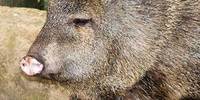
The most common peccary species found in Indiana Caverns is the flat-headed peccary. This is one of three peccary species found in Indiana during the Ice Age. They were a social or herd species and known to rear their young near caves and bluff settings. They are a distant relative to the pig of today.
At least 13 peccary skulls have been found on the cave surface, along with thousands of other peccary bones.
Indiana Caverns is one of two locations in the world where ancient peccary tracks are found within a cave.
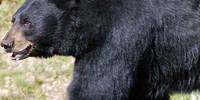
Unlike other animals that entered the cave, bears were able to come and go using the now sediment filled Pleistocene entrance above Peccary Plunge. They most likely used the cave for sleeping as several bear wallows may be seen along a small stream in “Sleeping Bear Boulevard”.
Pleistocene Bears
Evolution of Black Bears (PDF)
National Geographic - Black Bears
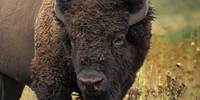
Near the base of Big Bone Mountain, lies a nearly complete skeleton of a sub adult Pleistocene Bison, possibly Bison Antiquus. If confirmed as Bison antiquus, it will be the first Pleistocene bison found in an Indiana Cave.
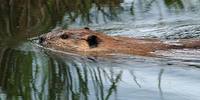
The beaver remains are assumed to be the same species of beaver that exists in Indiana today; however, there was a giant beaver that existed during the last ice age. Further research is required to know more.
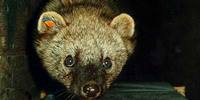
The fisher is a medium-sized forest-dwelling mammal native to North America. They are now found only in the far north where the climate is colder.
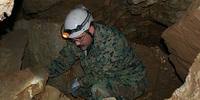
As more experts gain access to our Ice Age bones and excavation begins, we fully anticipate even more exciting finds.
One exciting find, identified after we opened for tours, was the presence of Passenger Pigeon bones. The last passenger pigeon died exactly 100 years ago, in 1914.